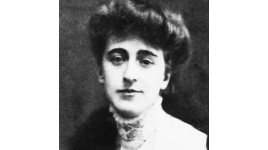Pioneer Information
Born in Newark, New Jersey, Rehmann attended Wells College in Aurora, New York from 1904 to 1906 with the intention of becoming a writer. She transferred to Barnard College in New York City, earning a B.A. in 1908. Rehmann then enrolled at the Lowthorpe School of Landscape Architecture in Groton, Massachusetts. She remained there until 1911, when she began an apprenticeship in New York City with landscape architect Charles Lowrie, and landscape architect Marian Coffin, who specialized in estate gardens. Rehmann produced her first book, The Small Place: Its Landscape Architecture, in 1918. Around this time, she also published numerous articles in Garden Magazine, Country Life, House Beautiful, and Better Homes and Gardens. Rehmann established her own office in 1919, working out of her home. She planned gardens in New Jersey, New York, Pennsylvania, Delaware, and New England. In 1926 Rehmann published her second book entitled Garden-Making, a discourse on garden theory. During the 1920s she became associated with Vassar College and botanist Edith Roberts, who affected her landscape philosophy. Rehmann assisted Roberts at her outdoor botanical laboratory for experimental ecology at Vassar, which became known as the Dutchess County Outdoor Ecological Laboratory. They established plants native to the county and used the data produced by the laboratory. Rehmann and Roberts published a collection of articles entitled American Plants for American Gardens in 1929 (republished in 1996). The pioneering publication was among the first to promote the use of native plants in landscape design. Rehmann moved to Rockport, Massachusetts, that year to live with her sister, apparently retiring from her practice. During the 1930s she participated in a series of lectures with botanist Stephen Hamblin. Taking up poetry after moving to Rockport, Rehmann published a volume of poetry entitled First Poems in 1933. She passed away at the age of 60 in Rockport.





